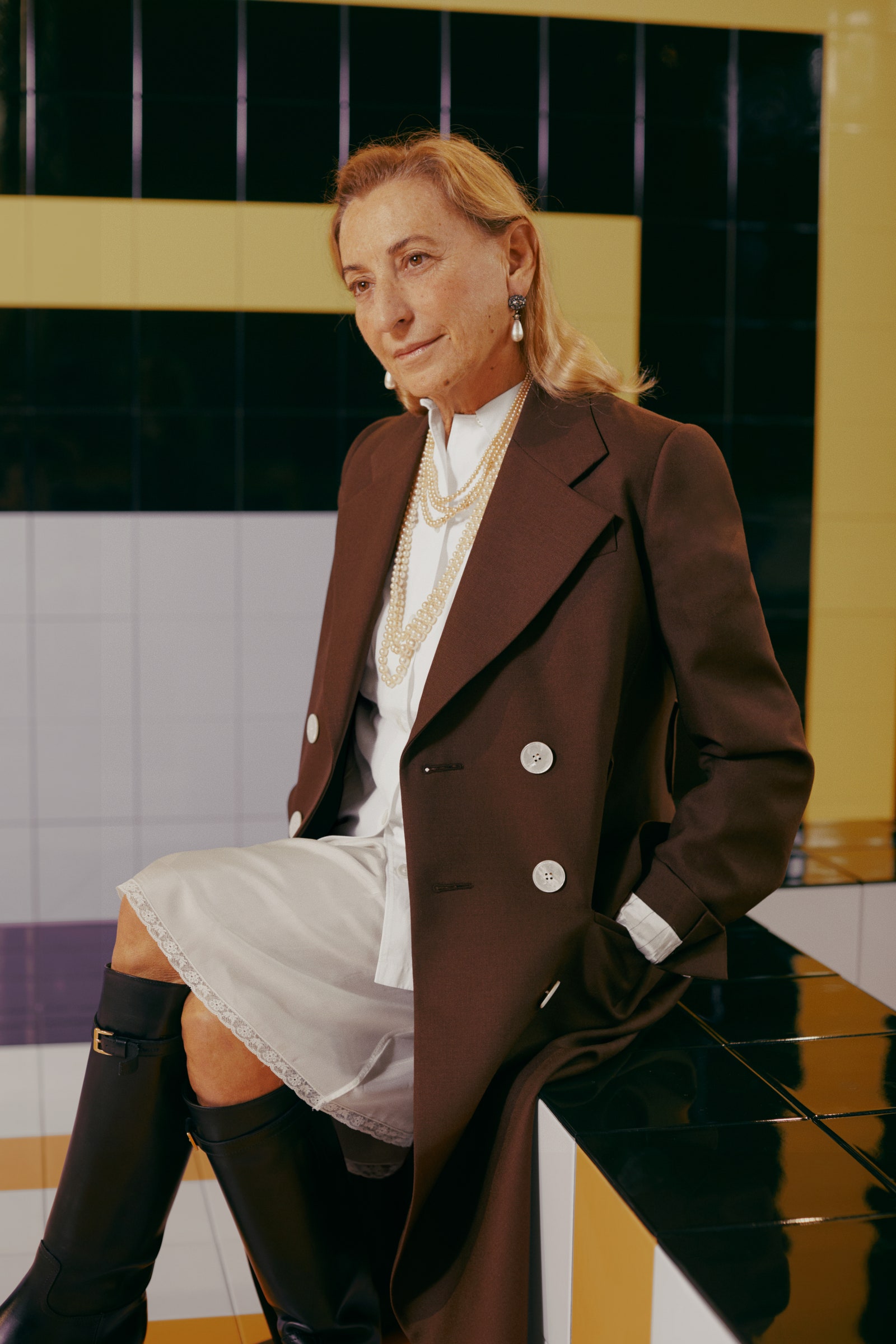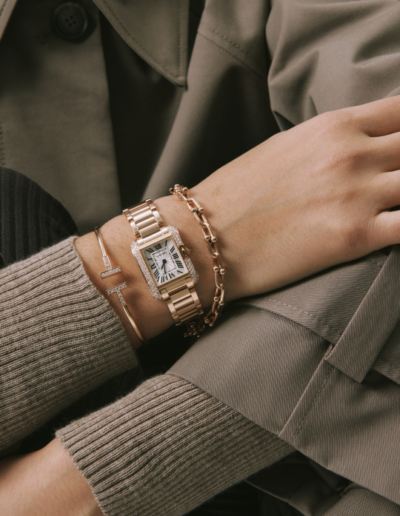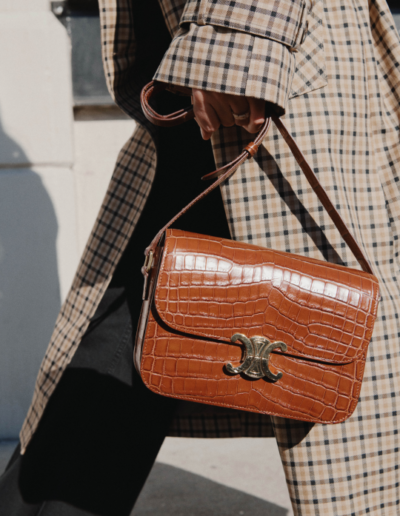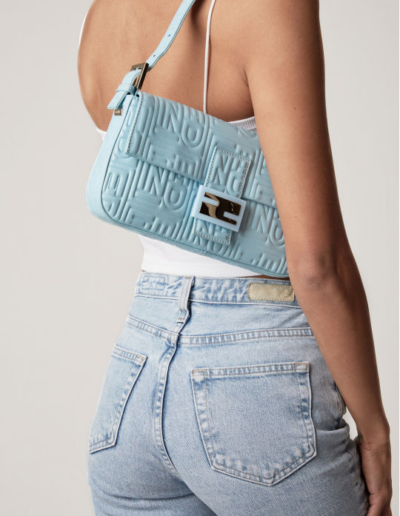KNOWLEDGE
Prada 101:
a history
By Taylor M. Feb. 27, 2018
`

Dive into the rich, complex history of one of Italy’s
most prominent fashion houses: Prada. From their very conception to what they’re most known for now, learn about the vast greatness behind the Prada family, including the original ‘Fratelli Prada’ to Miuccia Prada today.
The Birth of Prada
Originally named “Fratelli Prada,” one of the most impactful fashion houses in Italian history was born in the Galleria Vittorio of Milan in 1913. Mario and Martino Prada opened the first store, originally selling luxury travel goods. The merchandise included steamers, trunks, and travel accessories. Early on, Fratelli Prada (Fratelli meaning “Brothers”) earned a position of high regard, becoming the official supplier to the Italian royal family after just six years of business.
The Female Legacy
Mario originally intended to pass Fratelli Prada down to his son, however, when the time came he was not interested. His sister, Luisa Prada, took over the company upon their father’s passing. Luisa worked as head of the company from 1958 to 1978, running the family business for just under two decades.
Female leadership at Prada did not end with Luisa. The next heiress in line to head the company was her daughter, Maria Bianchi, who originally aspired to be a politician. Known later in her career as Miuccia Prada, Maria had previously studied feminism and participated in the Italian Communist Party. She obtained a PhD in Political Science at the University of Milan before taking over the company from her mother in the seventies. Bianchi hired a leather supplier with whom she had become acquainted with at a trade show; he had been there selling knockoffs of the family’s goods. This new partner, Patrizio Bertelli, became a key collaborator as Maria set out to revamp her family’s brand, as it had lost some of its momentum after Mario’s death. Bianchi and Bertelli were married in 1987, but Maria was legally adopted by her aunt who had not been married, making Prada her last name.

Courtesy of GQ Magazine, photographed by Fanny Latour-Lambert
Miuccia’s Revolution
The now-iconic handbag design using Pocono nylon fabric was first introduced to the world by Miuccia in 1979, however the collection was not immediately successful. The bags were constructed out of long lasting military-grade fabric, but they lacked any branding. Later into the 80’s, Miuccia decided to revisit her idea with a branded approach, placing the triangular Prada logo on the exterior and adding a chain strap. Now widely recognizable, the logo and nylon concepts are popular staples of the brand to this day.
The bulk of Prada’s establishment in the fashion industry is attributed to Miuccia’s direction as leader of the company. In the 80’s, during the rise of the working woman, she began using her education and feminist ideologies to make statements through the Ready-to-Wear collections. While women’s fashion across the board was vastly fixated on sex appeal, Prada managed to steer the forefront of style away from the typical standards of beauty and toward empowerment of the individual. The public began to see high-profile women of the arts such as Uma Thurman representing the Prada name. Combining regard for timeless Italian artistry, the current social climate, and individuality, Miuccia’s collections do not shy away from highlighting current issues and asking the public to question the norm.
Prada in the Present-Day
Now a standing force in the industry, Miuccia has turned her grandfather’s life’s work into a multibillion dollar powerhouse. Still working with Bertelli as her co-chief executive officer, Miuccia remains head designer of the brand today. Since taking over, the couple’s efforts to expand the brand fostered rapid growth. In 1992, Prada’s sister brand was born. More adventurous than Prada in design, Miu Miu opened its first store in 1993 and went on to be represented by A-list celebrities such as Kate Moss and Drew Barrymore. The brand also expanded into menswear and a sports line. The Prada Group went on to acquire designers Jil Sander and Helmut Lang, allowing the brand’s hand in high fashion to reach even further.
On February 23, 2020, it was announced that Miuccia is to now share her role as Creative Director with Raf Simons. Perhaps another strategic move to ensure the brand’s modernity, Raf’s influence on the brand could add a new perspective to Prada’s reputation for the unexpected. His minimalist approach to femininity is similar to that of Miuccia’s core design concepts and ideals. Though we can’t predict where Prada will go next, we can expect to see Miuccia’s brand making more waves in the design world and continuing the legacy of understated sensuality.



